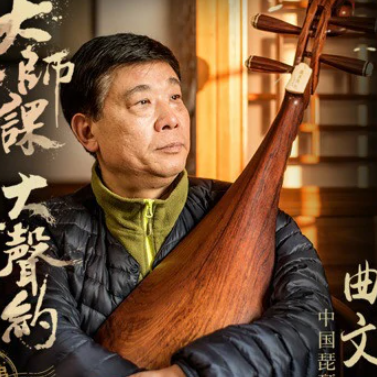Qu Wenjun

Qu Wenjun, male, director of China Pipa Research Association, member of China Musicians Association, and member of China National Orchestra Association. He has composed pipa solo pieces such as "Xia Fang Resentment", "Xiao Suo Qiu Xi", and "Yu Diao", and recorded the pipa solo album "Yingrun and Clear Pipa Pieces" and the teaching VCD "Music Special Teacher-Basic Course of Pipa Playing".
Qu Wenjun, male, born in Beijing in 1959, was admitted to the Shaanxi Provincial Art School in 1972, worked in the Yangxian Opera Troupe of Shaanxi Province from 1975 to 1977, and was admitted to the Xi'an Conservatory of Music for the undergraduate degree in 1978, under the tutelage of Professor Zhang Dihua, graduated in 1982 Stay in school to teach. In 1986, he was admitted to the Central Conservatory of Music for a postgraduate course under the tutelage of Professor Lin Shicheng. After graduation, he served as a pipa lecturer at Xi'an Conservatory of Music. In 1992, he was transferred to the Southern Song and Dance Troupe of Guangdong Province as a pipa solo performer. Since 1981, he has personally won a number of awards in international and domestic pipa competitions and domestic works competitions.
Now he is a director of the Chinese Pipa Research Association, a member of the Chinese Musicians Association, and a member of the Chinese National Orchestra Association. As early as the late 1970s and early 1980s, influenced by the rhythms of folk operas all over China, especially the Northwest, Qu Wenjun started his new explorations in performance and theory by combining the rhythm of Rongsheng, string board and blowpipe with traditional pipa techniques. . After unremitting efforts, he finally showed a distinctive rhythmic style in pipa performance, formed a complete set of rhyme expression skills, and produced a large number of new pipa works.
Some of the works he created or collaborated with, such as "Qinchuan Expressing Feelings", "Xiao Suo Qiu Xi", "Yu Diao", "Qin Fu", "Xia Fang Resentment", etc., have been compiled into the "Pipa Music Collection", which has been published by Chinese People's Music It was published by the Society and listed as Pipa teaching materials for colleges and universities at home and abroad, and some works were listed as the designated repertoires of some overseas Pipa competitions. In 1985 and 2019, at the new works performances of the Pipa Teaching Seminar in National Higher Conservatory of Music, his Pipa works aroused high evaluation and attention in the Pipa community. Experts believe that his "left-hand rhyme" is unique. , has made a breakthrough in the performance of the pipa, and is praised as a playing genius in the pipa field.
Similar artist
Involving musical instruments
Involved portfolio
Involved news
Popular artists
- 01 Zhang Xiuyan
- 02 Chen Tao
- 03 Li Muliang
- 04 Zhu Changyao
- 05 Zhang Gaoxiang
 渝公网安备 50010702504639号
渝公网安备 50010702504639号